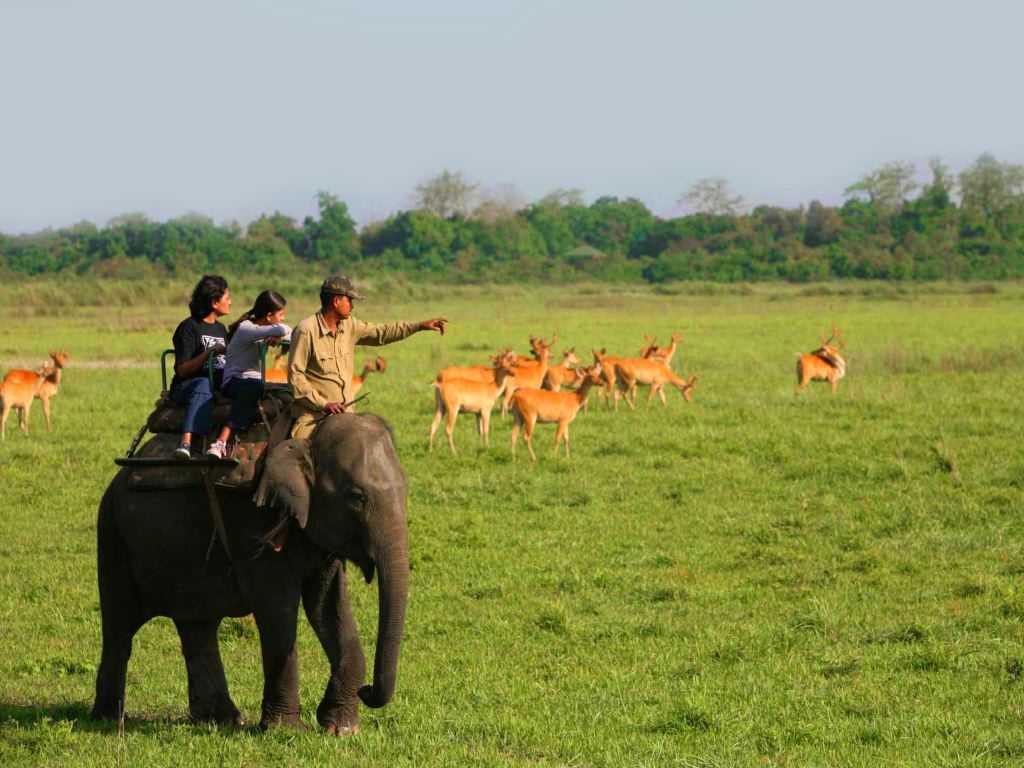
Feathered Fiesta: Kaziranga Roars with a Spectacular 27% Surge in Migratory Bird Population
In the course of a daylong census on January 10, the Kaziranga National Park and Tiger Reserve observed a noteworthy 27% increase in both resident and migratory bird populations, solidifying its position among the top five migratory bird stopover sites in the country. The preliminary findings of the 5th Kaziranga Tiger Reserve Water-bird Count, covering 115 water bodies across three divisions of the reserve, disclosed a total bird presence of 84,839. This marks a substantial surge from the previous count of 66,776 in 2021-22. Director Sonali Ghosh emphasizes that Kaziranga Tiger Reserve, not the national park, now ranks among the top five migratory bird stopover sites, particularly for ducks. Miss. Ghosh attributes this success to the reserve’s unique habitat, characterized by numerous wetlands and swampy areas, providing an ideal environment for aquatic birds. The geographical location in the Central Asian Flyway further contributes to the significant numbers of migratory birds, underscoring the global importance of Kaziranga’s wetlands as a habitat for both local and migratory water birds.

The census reported the presence of unique, rare, and endangered species, including Baer’s pochard, Baikal teal, greater scaup, gull-billed tern, greater white-fronted goose, great crested grebe, Pallas’s gull, black stork, black-headed gull, and cotton pygmy goose, as stated by park authorities.
The 5th water bird census adopted an enhanced methodology, covering 115 wetlands throughout the tiger reserve. It engaged a substantial number of bird experts as enumerators and forest frontline staff, with support from volunteers representing 30 educational institutions, NGOs, and various organizations. This collaborative effort resulted in one of the largest and most inclusive initiatives of its kind. Remarkably, tourism activities remained uninterrupted during the census, highlighting the successful execution of this comprehensive survey.
Kaziranga, a popular destination for birding
As per the park director, the top five bird-watching destinations include Chilika (Odisha), Kaziranga Tiger Reserve (Assam), Bharatpur/Keoladeo (Rajasthan), Najafgarh Jheel (Delhi), and Nalsarovar (Gujarat). Kaziranga stands out as a favoured spot for bird enthusiasts, renowned for its exceptional diversity boasting over 500 bird species. Encompassing 1,302 sq km, with more than half of its land covered in grasslands interspersed with water bodies (locally known as beels), Kaziranga provides a rich habitat. The reserve features over 200 wetlands, contributing to its popularity among birdwatchers. Recognizing its ecological significance, Kaziranga Tiger Reserve has earned a place in the Important Bird Area (IBA) list by the Bombay Natural History Society and BirdLife International, solidifying its global recognition for avian biodiversity.
Concluding results
The Eastern Assam Wildlife Division, primarily covering the Kaziranga National Park area, documented a total of 37,606 birds. Sohola Beel stood out with the highest abundance of a single species, the bar-headed goose, reaching an impressive count of 13,084. In the Nagaon Wildlife Division, Rowmari Beel recorded the highest bird count across all wetlands, totaling 19,301. Within this division, which encompasses Laokhowa and Bura Chapori Wildlife Sanctuaries and Joysagar Doloni of Kaliabor, the northern pintail variety dominated with the highest abundance at 8,960 individuals. Moving to the Biswanath Wildlife Division, the Dipora Area reported the highest bird abundance, tallying 2,727 individuals.
- The first water-bird census in 2018 revealed 10,412 waterfowl representing 80 different species.
- The second census in 2020 marked a significant expansion, covering key wetlands throughout the entire tiger reserve area, and identified 34,284 birds from 98 species.
- In 2021, the third census encompassed 52 wetlands, documenting an impressive count of 93,491 water birds spanning 112 species across 22 families.
- The fourth census, conducted over five days in 2022 across vital wetlands and rivers of the tiger reserve, reported a notable surge, recording a total of 66,776 water birds.


